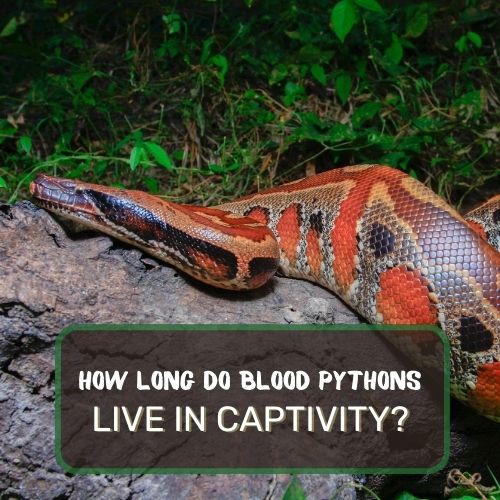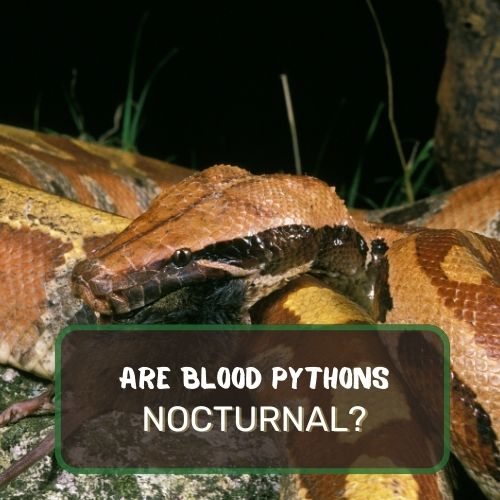
It’s a question that has captivated and concerned many reptile owners for years on whether they can cohabit their Ball python with another reptile such as a Bearded Dragon.
This article dives deep into the fascinating world of these two popular reptiles, exploring their natural behaviors, interactions, and the factors that influence their actions.
We’ve delved into their backgrounds, analyzed their aggressive tendencies, and even looked at their defense mechanisms.
By the end of this comprehensive guide, you’ll have a clear understanding of the dynamics between ball pythons and bearded dragons, and the precautions necessary to ensure their safety.
So, whether you’re a seasoned reptile owner or just curious about these incredible creatures, this article promises insights that will both educate and captivate.
Table of Contents
- 1 Can a Ball Python Kill a Bearded Dragon? Yes They Can
- 2 Ball Pythons: Gentle Giants?
- 3 Bearded Dragons: The Desert Dwellers
- 4 The Interaction Between Ball Pythons and Bearded Dragons
- 5 Factors Influencing Aggression in Reptiles
- 6 Defense Mechanisms of Bearded Dragons
- 7 Safety Precautions for Co-habiting Reptiles
- 8 Conclusion
- 9 FAQ
Can a Ball Python Kill a Bearded Dragon? Yes They Can
Yes, a ball python can potentially kill a bearded dragon. Ball pythons are carnivorous creatures with a natural instinct to hunt and constrict their prey. While they primarily feed on rodents in the wild, they can view smaller creatures, including bearded dragons, as potential food sources. Bearded dragons, on the other hand, are not equipped to defend themselves against the constricting power of a python.
Therefore, it’s crucial for pet owners to never house these two species together or even allow them to interact, ensuring the safety and well-being of both animals.

Ball Pythons: Gentle Giants?
When you hear the word “python,” what’s the first thing that comes to mind? For many, it’s a massive, intimidating snake, lurking in the shadows, ready to strike. But let’s set the record straight about ball pythons.
Introduction to Ball Pythons: Characteristics, Behavior, and Size
Ball pythons, also known as royal pythons, are one of the most popular pet snakes worldwide. Originating from West and Central Africa, these snakes are relatively small compared to other pythons, typically reaching lengths of 3 to 5 feet.
Their name “ball” python comes from their tendency to curl into a tight ball when threatened, hiding their head in the center.
Their scales exhibit a variety of beautiful patterns and colors, making them a favorite among reptile enthusiasts. But it’s not just their appearance that’s captivating.
Ball pythons are known for their docile nature. Unlike the aggressive image many have of pythons, these creatures are generally calm and easy-going, especially when they are accustomed to human handling.
Common Misconceptions About Ball Pythons
There’s a lot of hearsay when it comes to ball pythons. Some believe they’re dangerous, aggressive creatures, ready to constrict at a moment’s notice. But in reality, ball pythons are more likely to curl up in fear than attack.
They’re non-venomous, and their primary defense mechanism is to hide or flee rather than confront.
Another misconception is their dietary habits. While they’re carnivorous, their primary diet consists of small mammals, like rodents.
They don’t go around hunting large prey, let alone creatures like bearded dragons, unless they mistake them for food.
Their Behavior in Captivity vs. the Wild
In the wild, ball pythons lead a secretive life, often hiding in burrows and coming out primarily at dusk or dawn to hunt. They’re ambush predators, lying in wait for the perfect moment to strike their prey.
However, in captivity, with regular handling and a consistent environment, they often become more relaxed and less stressed.
That said, it’s essential to understand that while they might be more docile in captivity, they still retain their natural instincts.
This means if they’re introduced to other animals, like a bearded dragon, their predatory instincts could kick in. It’s not a matter of malice; it’s just nature.

Bearded Dragons: The Desert Dwellers
Ah, the bearded dragon! A creature that seems to have walked straight out of a fantasy novel, with its spiky appearance and dragon-like demeanor. But what’s the real story behind these fascinating reptiles?
Introduction to Bearded Dragons: Characteristics, Behavior, and Size
Bearded dragons hail from the arid landscapes of Australia, where they bask under the sun and roam the vast deserts. Typically, an adult bearded dragon measures between 18 to 24 inches, making them a medium-sized reptile.
Their name is derived from the “beard” under their throat, which can puff up and darken when they feel threatened or during mating displays.
Their rough, spiky appearance might seem intimidating, but these creatures are known for their calm and friendly nature.
They have a unique way of communicating, often seen waving one of their front legs in a circular motion, a gesture that’s still a bit of a mystery to us!
Their Popularity as Pets
Bearded dragons have soared in popularity as pets, especially in the last few decades. Their docile nature, combined with their intriguing appearance, makes them a favorite among reptile enthusiasts.
They’re relatively easy to care for, requiring a diet of insects, vegetables, and fruits. Plus, they’re known to form bonds with their owners, often enjoying a gentle pat or even a snuggle!
Unique Features and Behaviors
One of the most endearing behaviors of bearded dragons is their head-bobbing. This can be a sign of dominance, a mating display, or even a simple acknowledgment.
They also have the ability to change the color of their beards and bodies, especially when they’re feeling stressed, threatened, or during mating seasons.
And let’s not forget their ability to “beard up” when they want to appear bigger and more intimidating!

The Interaction Between Ball Pythons and Bearded Dragons
Now, let’s dive into the heart of the matter. What happens when a ball python meets a bearded dragon?
Natural Habitats and Whether Their Paths Cross in the Wild
In the wild, these two creatures would never cross paths. Ball pythons are native to the grasslands of West and Central Africa, while bearded dragons call the deserts of Australia home.
Their natural habitats are worlds apart, both geographically and ecologically.
Potential Risks When They Interact
While they might never meet in the wild, in captivity, there’s a chance they could be introduced. And this is where things can get dicey. A ball python’s natural instinct is to constrict and consume its prey.
While they primarily eat rodents, they could potentially see a bearded dragon as a food source. On the other hand, bearded dragons are not equipped to defend themselves against the might of a python.
Their spiky exterior might deter smaller predators, but against a python’s constriction, they stand little chance.

Factors Influencing Aggression in Reptiles
Reptiles, like all creatures, have their moments of aggression. But what triggers these behaviors? Is it just their nature, or are there specific factors that push them to act aggressively?
Let’s delve into the world of reptiles and uncover the mysteries behind their aggressive tendencies.
Territory and Space
Just like us humans, reptiles are very particular about their personal space. Territory plays a crucial role in their lives. A reptile’s territory is its kingdom, a place where it hunts, rests, and breeds.
When another creature invades this space, it’s seen as a threat. This territorial nature can lead to aggressive behaviors, especially if the intruder is of the same species. It’s a reptile’s way of saying, “Back off, this is my turf!”
Mating Season Behaviors
Ah, love is in the air! But in the reptile world, love can be a bit… aggressive. Mating season often brings out heightened behaviors in reptiles. Males might become more territorial, ready to fend off any rival suitors.
They might display aggressive postures, engage in physical confrontations, or even vocalize loudly to assert dominance and win over a mate.
Food and Prey Drive
Hunger can make anyone cranky, and reptiles are no exception. A reptile’s prey drive is a natural instinct, honed over millions of years of evolution. When they spot potential food, their predatory instincts kick in.
This drive can lead to aggressive behaviors, especially if they feel their meal is threatened or being taken away.

Defense Mechanisms of Bearded Dragons
Bearded dragons, with their spiky appearance and dragon-like demeanor, might seem like fierce warriors. But how do they fare when faced with danger?
Their Natural Predators and How They Defend Themselves
In the wild Australian deserts, bearded dragons have their fair share of predators, including birds of prey, larger reptiles, and dingoes. To defend themselves, bearded dragons employ a range of tactics.
They can puff up their bodies and display their “beards” to appear larger and more intimidating. They might also open their mouths wide, showing off their toothy maw to deter potential threats.
Signs of Stress and Fear in Bearded Dragons
Bearded dragons are expressive creatures. When stressed or scared, they might darken the color of their beard or body. Rapid breathing, a gaping mouth, and frantic attempts to escape are also signs of distress.
They might also wave their arms in a peculiar manner, a gesture that’s believed to be a sign of submission or unease.
The Importance of Understanding Their Body Language
For any bearded dragon owner, understanding their pet’s body language is crucial. It’s their way of communicating their feelings and needs.
By recognizing the signs of stress or fear, owners can take steps to ensure their pet’s comfort and well-being, whether it’s providing a safe hiding spot, adjusting the habitat’s temperature, or simply giving them some space.

Safety Precautions for Co-habiting Reptiles
What happens when you decide to bring more than one reptile into your home? Can they live together in harmony, or is it a recipe for disaster?
Let’s dive into the essential safety precautions you should consider when co-habiting reptiles.
The Importance of Separate Enclosures
Imagine sharing your room with a stranger. Sounds uncomfortable, right? The same goes for reptiles. Each species has its specific habitat requirements, from temperature and humidity to lighting and space.
By providing separate enclosures, you ensure that each reptile gets the environment it needs to thrive.
Moreover, different reptiles have different temperaments. While some might be docile and easy-going, others can be territorial and aggressive. Housing them together can lead to confrontations, injuries, or even fatalities.
Separate enclosures not only cater to their environmental needs but also prevent potential conflicts.
Monitoring Their Health and Behavior
Just like us, reptiles can have good days and bad days. Regularly monitoring their health and behavior is crucial when you have multiple reptiles. Look out for any changes in their eating habits, activity levels, or physical appearance.
A sudden loss of appetite, lethargy, or unusual spots and discolorations can be signs of health issues.
Additionally, observe their interactions if they ever come into contact, even if it’s for a brief moment. Are they curious about each other, or do they display signs of aggression?
Understanding their behavior towards each other can provide insights into their compatibility.
Signs of Stress or Aggression to Watch Out For
Reptiles have their ways of expressing discomfort, stress, or aggression. A bearded dragon might darken its beard, while a ball python might become more restless and active.
Hissing, puffing up, rapid breathing, and attempts to strike or bite are clear signs of aggression or fear.
If you notice any of these signs, it’s essential to address the issue immediately. It could be a result of an environmental factor, like an enclosure that’s too hot or cold, or it could be due to the presence of another reptile.
Either way, understanding these signs and acting promptly can prevent potential conflicts and ensure the well-being of your scaly friends.

Conclusion
In your journey through this article, you’ve delved deep into the intricate dynamics between ball pythons and bearded dragons.
You’ve discovered the inherent nature of these reptiles, their behaviors in various circumstances, and the potential risks of their interactions.
It’s essential to remember that while both creatures are captivating in their own right, their coexistence requires careful consideration and understanding.
Knowledge is the key to ensuring the safety and well-being of these animals. By being informed, you’re not only safeguarding their lives but also enriching your experience as a reptile enthusiast.
Every creature, no matter how big or small, has its unique set of needs and behaviors. Recognizing and respecting these differences is the hallmark of a responsible pet owner.
FAQ
Here are some frequently asked questions to shed light on common curiosities:
Will a ball python eat a lizard?
Yes, a ball python can potentially eat a lizard, especially if it’s small enough to be considered prey. While their primary diet in captivity consists of rodents, in the wild, they are opportunistic feeders and might consume lizards if available.
How big of an animal can a ball python eat?
Ball pythons can eat animals that are roughly the same width as the widest part of their body. This typically includes small to medium-sized rodents. However, it’s essential to ensure that the prey isn’t too large, as it can cause digestion problems or even injury to the python.
Can ball pythons live with other reptiles?
It’s generally not recommended to house ball pythons with other reptiles. Each species has its specific needs, and mixing them can lead to stress, territorial disputes, or even predatory behavior. Always prioritize the safety and well-being of each reptile by providing separate enclosures and monitoring any interactions closely.




0 Comments